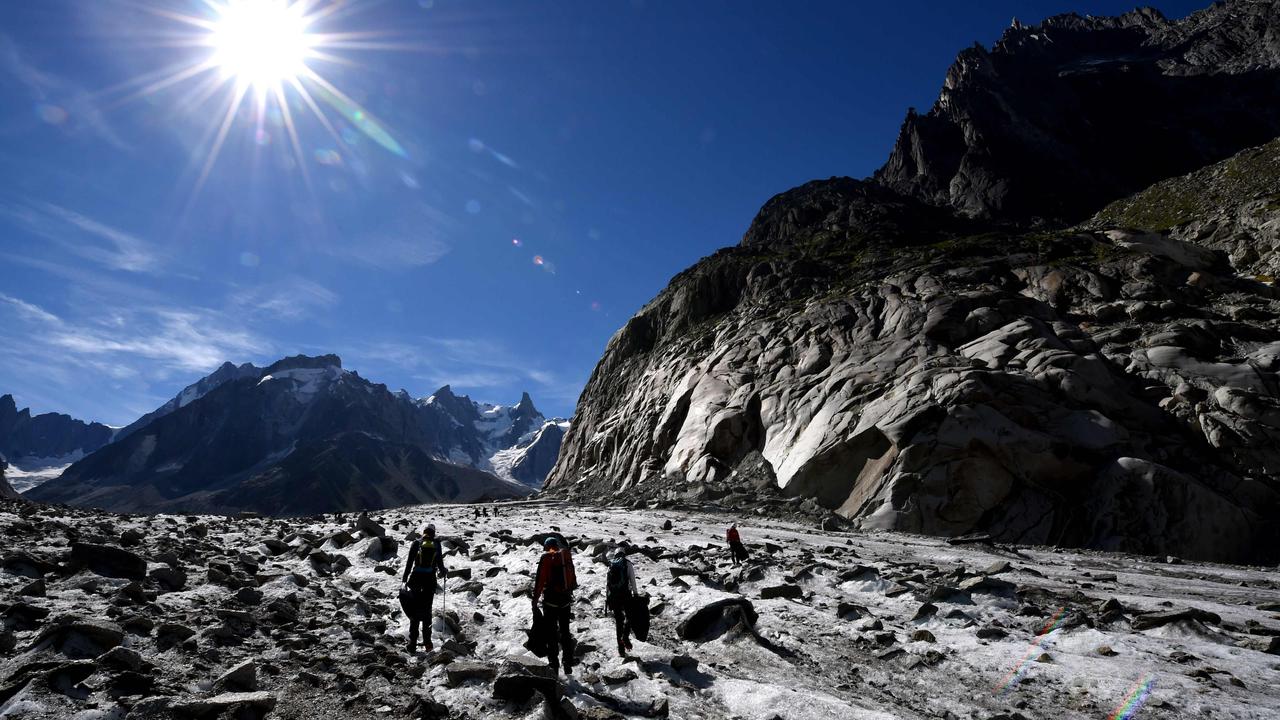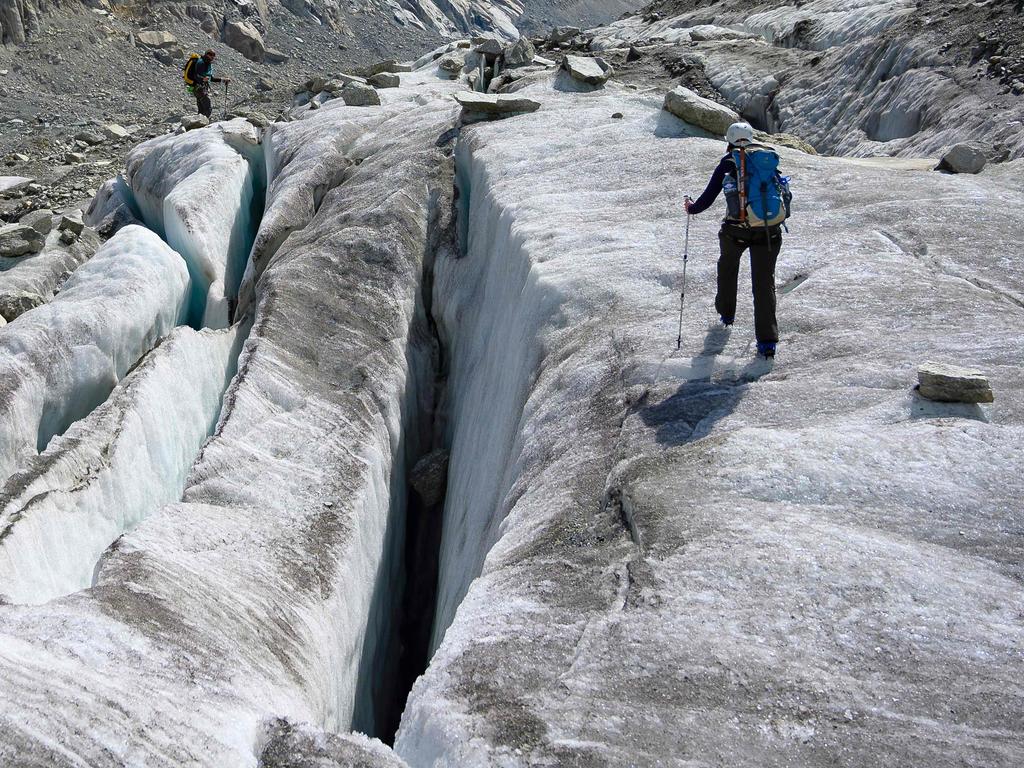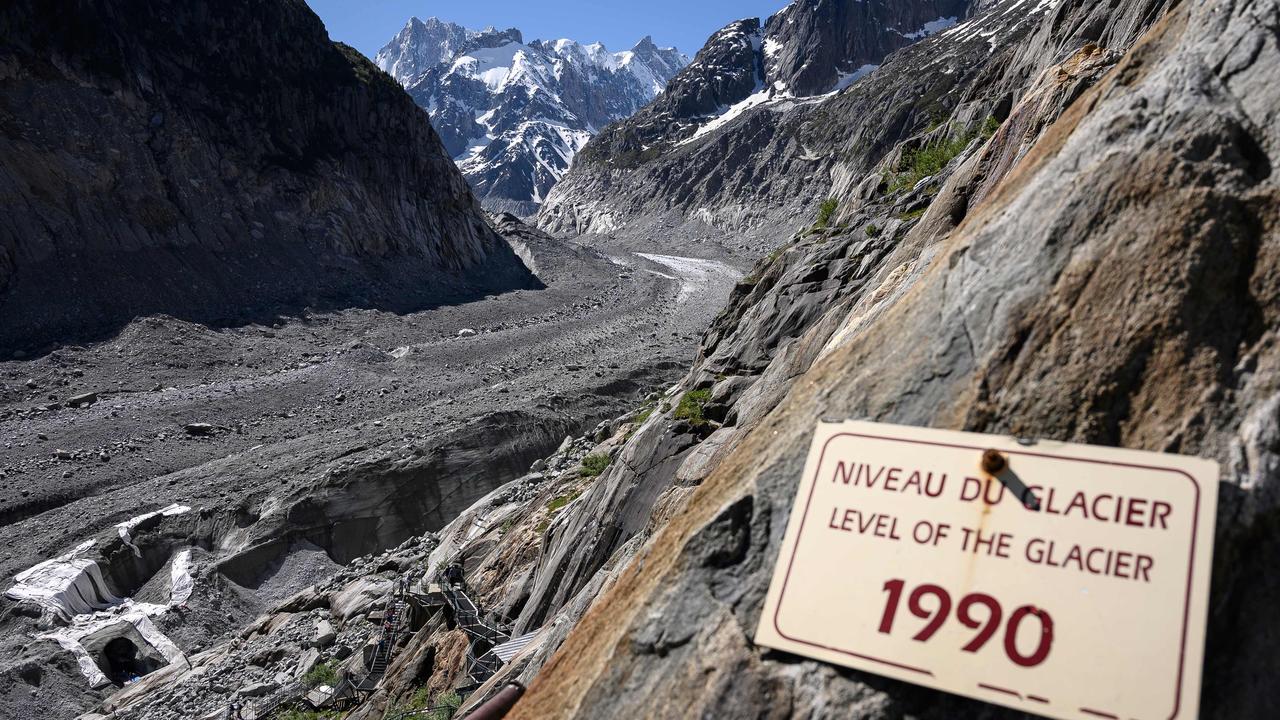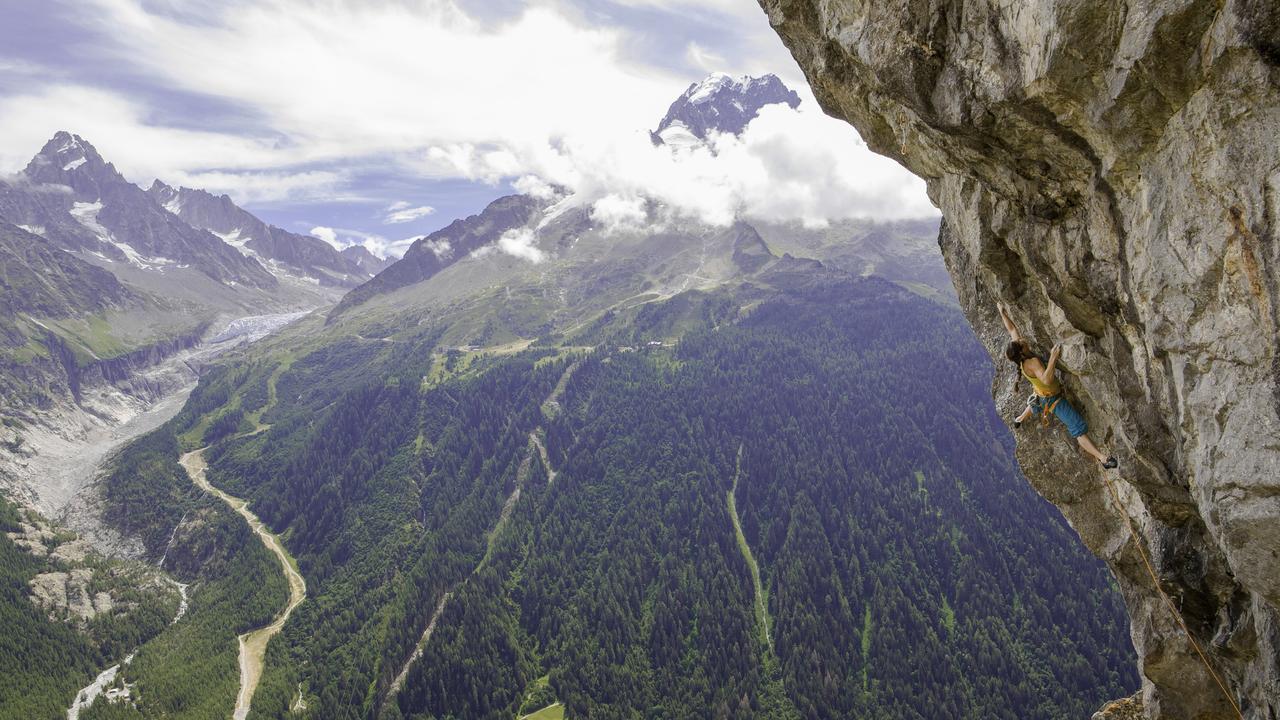How global warming is destroying the French Alps, and a way of life
The French Alps are in danger of becoming a no-go zone for mountain climbers as warmer temperatures cause rockfalls leaving many popular routes up or through the peaks too dangerous.
High up in the natural wonder of the French Alps, the climbers who spend their days among the rockfaces and glaciers have come to a grim conclusion: the mountains are falling down around them.
In the Mont Blanc range, a magnet for mountaineers in the summer, many popular routes up or through the peaks have become too dangerous to take because of the risk of falling debris.
“It’s going quickly. Ten years ago, I’d have never thought that it would accelerate like this,” said Ludovic Ravanel, an academic at the University of Savoie Mont Blanc who has been studying major rockfalls in the area.
“And if you look at the predictions from my climatologist colleagues, for the next 10 to 20 years, it’s only going to get worse.”
In many areas of western Europe, climate change is happening too slowly to be noticed, although two record-setting heatwaves in June and July this summer as well as water shortages are focusing minds.

Around Mont Blanc, the warming has already left physical scars.
In 2005, following a major heatwave two years earlier, a huge shard of granite called the Bonatti pillar suddenly collapsed, spewing 292,000 m3 of rock into the valley below and stunning the mountaineering community.
With it went a feature visible from the nearby resort town of Chamonix, as well as the dreams of many climbers hoping to take on a legendary challenge named after celebrated Italian mountaineer Walter Bonatti.
Major rockfalls on less famous routes continue regularly, without fanfare, and would go unnoticed were it not for the work of researchers like Ravanel who tracked them for his PhD.
Occasionally, they register more widely in the climbing community, like a collapse on the Arete des Cosmiques ridge last summer that is often taken by beginners hoping to take on the 4810-metre Mont-Blanc peak, the highest in western Europe.

“There’s not much time left for certain rockfaces,” warned 37-year-old Ravanel, whose father was a mountain guide.
The reason is that permafrost — the year-round ice found at high altitude — is melting and with it the glue that binds together giant slabs of rock.
Retreating glaciers, which are melting under the effect of higher temperatures, are also leaving the peaks more vulnerable and less supported.
Though erosion is a constant natural process -- and rockfall has been a danger since climbing began -- the effects of climate change are believed by scientists to be speeding up the rate of attrition in the Alps.
Legendary climbs no longer
Worries about the impact of shorter winters and hotter summers are commonplace in the ski businesses and mountain refuges where people depend on adventure sports for their livelihoods.

At a high-altitude refuge called Couvercle above the Mer de Glace glacier, conversations among the 50 guides and climbers staying there for the night focused as usual on security.
Many wanted to know if it would re-freeze overnight, making the snow firmer, or whether certain routes were open and safe to pass in the current conditions.
But all of them shared scare stories that they linked to global warming, including a 40-year-old guide from the nearby town of Thonon who was climbing the Aiguille du Peigne in the Chamonix area.
“The rock starting vibrating,” he said. “I won’t be in a hurry to go back.”
A table of trainee guides, athletic young men under 30 aiming for careers in the industry, voiced their worries about the future of their profession.
They said they had seen the change even in their relatively short lifetimes. “The snow trails are hit-and-miss. In June, you used to be able to go for it. Nowadays it’s not always possible and in July, forget about it,” one of them, Remi, said.
His friend, who declined to give his name, said that spring rather than summer had become the busy period for serious climbers.

“It’s better than July-August for people who really want to do proper climbing stuff,” he said.
When he mentions how he has to avoid some of the legendary routes, the table goes quiet.
“The amazing granite, the legendary faces, you know it’s going to drop,” he said.
Disappearing routes
Confirmation of the decay came in a recent study based on a popular mountaineering book published in 1973 by famed climber Gaston Rebuffat called “100 Most Beautiful Routes”.
Ravanel and fellow academics analysed the routes in order to measure how they had changed in the more than 45 years since the first appearance of the book, a bible for several generations of mountaineers.
A majority of them had been affected by climate change, concluded the study in June, including 26 which were “very affected” and three which no longer existed.
The team of mountain specialists at the University of Savoie Mont Blanc looked at the ice and snow coverage, as well as the extent of exposed rock and the state of the glaciers, where crevasses are widening.
The optimal climbing conditions had moved to the spring and autumn, it said, while routes in general had become more dangerous and technically more difficult.
For guides, the unpredictability of the conditions, with unexpected warm spells in winter or late snowfalls, is making a dangerous job even more nerve-wracking.
But some are keen to simply enjoy it while they can.
“I’ve started to accept quite a few things,” admits Yann Grava, 33, who will finish his training to be a guide next year. “On average, a guide used to be able to work for about 15 years, but for me I think it’ll be around 10. The mountains are falling.”



